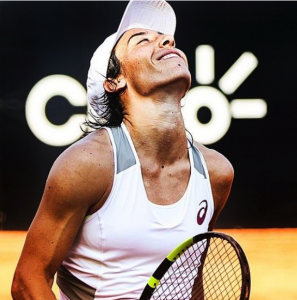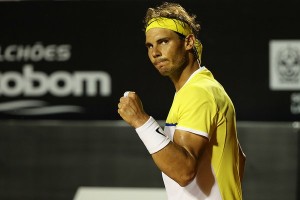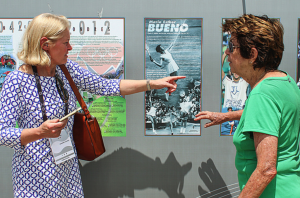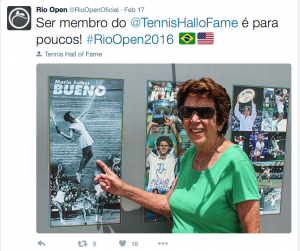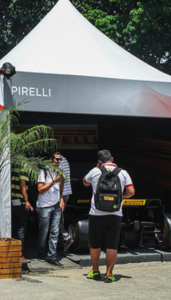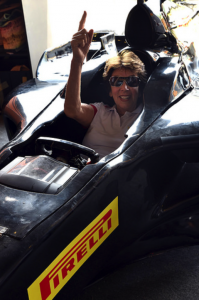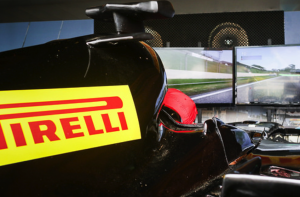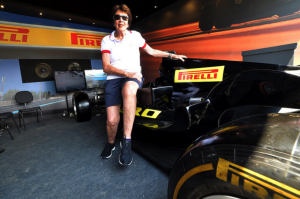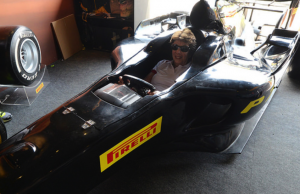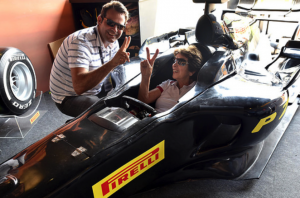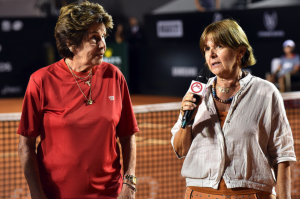A word on the tennis
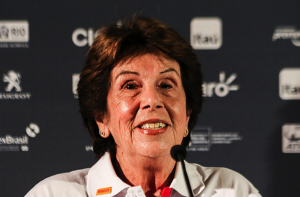 Maria Esther Bueno has been making appearances on and off the court during the Rio Open this week. In the commentary box she has been keeping a watchful eye on the tennis, well into the night.
Maria Esther Bueno has been making appearances on and off the court during the Rio Open this week. In the commentary box she has been keeping a watchful eye on the tennis, well into the night.
“Last night I finished at 1.30 in the morning,” she laughed. “But it is all worth it because it is promoting the game I love in so many different ways.
“I’ve also had a chance to talk to many of the players, including Rafa [Nadal] and Francesca [Schiavone], who are both doing well this week and have reached the semi-finals.
“Francesca has come back in two matches to win in very hot, humid conditions. Very impressive, especially since she is probably the oldest player in the women’s draw.”
“It was a difficult match and the conditions were not easy,” admitted the Italian, speaking of her quarter-final win over qualifier Cindy Burger of the Netherlands.
“The ball kicks a lot on this courts here, so it´s quite challenging. The heat is also extreme, but I like to play in these conditions and I have prepared well for that.”
There are no seeds left in the women’s draw so the title is very much up for grabs.
A lot of seeds have tumbled out of the men’s draw too, leaving Nadal and Dominic Thiem as favourites to contest the final but they have to get there first and face clay court specialists Pablo Cuevas and Guido Pella respectively.
As for Rafa, he, apparently is rather jealous of Maria Esther’s credentials that describe her as a 19 Grand Slam Champion while his only says ‘player’!
Maria Esther Hits at Rio Open with Flavia
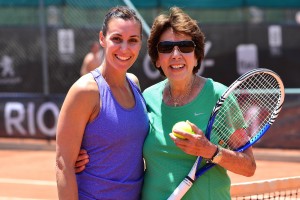 In between her commentary for SporTV, she has been trying her hand at some Formula 1 driving and keeping her game well tuned with a hit with Flavia Pennetta.
In between her commentary for SporTV, she has been trying her hand at some Formula 1 driving and keeping her game well tuned with a hit with Flavia Pennetta.
“It was great fun hitting with Flavia yesterday,” she said. “I really admire the way she plays. It is more classical than the style of younger players these days and we got a good rhythm going! “We also seemed to attract a lot of interest! I suppose it is not often you get two US Open champions hitting on a court together.” They both took time to give interviews, pose for photos and signed autographs. Take a look at these clips:
Miss @flavia_pennetta? Watch the @usopen champion hitting with 19-time GS champion Maria Bueno at #RioOpen2016. pic.twitter.com/DKY2xaDpYw
— Rio Open (@RioOpenOficial) February 17, 2016
Hall of Famers
She also dropped in to see the International Tennis Hall of Fame exhibit in the grounds of the Jockey Club Brasileiro and was pleased to meet their representative Dianne Hayes, who had flown in from their headquarters in Newport, Rhode Island, USA.
“We had been corresponding for some months over the Hall of Fame’s promotional video that they have been showing in the stadium here, so it was nice to finally meet her!” said Maria Esther.
- Dianne Hayes and Maria Esther Bueno at the ITHOF exhibit at the Rio Open
Maria Esther is featured alongside the only other Brazilian Hall of Famer, Guga Kuerten, in the 30 second film clip acknowledging their outstanding careers and achievements.
Pirelli’s latest Formula 1 Driver
Maria Esther then paid a visit to the Pirelli stand, which offers a great Formula 1 simulator that visitors can drive for a nail-biting five minutes around the Interlagos circuit.
“It’s a great game,” she said. “The car reacts to the pedals and the steering wheel, and the three screens in front of the driver help to make it feel very real.
“It’s a fantastic experience and very different to driving a normal car! I’m glad they didn’t let me go on the track in that car…
“The biggest problem for me was getting in and out of the car! I had two enormous guys helping me since after my hip surgeries I don’t bend enough. Once I was in, I was lying down in the cockpit and they said ‘don’t fall asleep in there’… as if I could!
“It was fun driving it though, but then they had to get me out and that was even harder! It was very funny actually, especially for the crowd watching!
“How those [F1] drivers hop in and out of their cars is really amazing!”
A Tribute to Alcides Procopio
Maria Esther made an appearance on the main show court on Thursday evening, presenting Alcides Procopio Junior with a commemorative plate on behalf of the Rio Open.
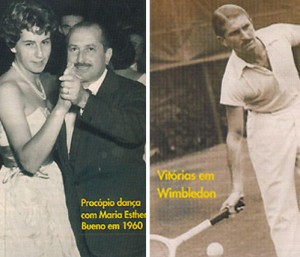 The pioneering Procopio and his importance to Brazilian tennis was remembered in a short video played after the match between Rafael Nadal and Nicolás Almagro when the audience watched a tribute to the man who would have turned 100 years this year.
The pioneering Procopio and his importance to Brazilian tennis was remembered in a short video played after the match between Rafael Nadal and Nicolás Almagro when the audience watched a tribute to the man who would have turned 100 years this year.
Procopio was the first Brazilian to play at Wimbledon in 1938, and his history merges with the history of tennis in Brazil.
He spent over 60 years devoted to the game and, during his lifetime, the Sao Paulo native helped the rise of the best Brazilian tennis players: Koch Tavares, Cássio Motta, Mattar Oncins and, of course, the greatest of them all, Maria Esther Bueno.
After winning more than 500 trophies and medals during his career, Procopio continued to play tennis until he was 80 years old, six years before his death.
His passion for tennis began as a child at the Sociedade Harmonia de Tênis in São Paulo where his father ran the club bar and the young Procopio hoped someone would get tired of playing and then borrow a racket to replace them on the court.
At 16, he played his first tournament and began beating the best players in the country at the time.
Years later, he travelled to Europe, played at Wimbledon, and had the honour of forming a doubles team with King Gustav of Sweden but his trip was cut short because of World War II.
Back in Brazil, Procopio won the championships of Brazil, Argentina, Chile, Uruguay, Peru and Bolivia, and was a six times South American champion.
He played for Brazil in the Davis Cup and, after retiring from competition, was captain of the team that included Thomaz Koch and Edison Mandarino and reached the semi-finalis in 1969, the country’s best result in the team competition.
He set up the country’s first racket factory, Procopio Sports, and created the Davis Cup made, the most popular national racket of the time. The factory, located in Manaus, also finished the Donnay, Wilson and Dunlop rackets, selling an incredible 10,000 rackets a month at one stage.
He also opened the first company to build tennis courts in Brazil, the Constructions-sports Floors Procopio.
Serving as President of the Federação Paulista de Tennis for 13 consecutive terms (26 years), he was founder of the Brazilian tennis Confederation and, in 1969, achieved one of his greatest dreams when he created the Banana Bowl, the most important youth tournament in South America for decades.
The owner of 19 titles of Grand Slams, including singles, doubles and mixed doubles, Maria Esther Bueno presented a plaque celebrating his contribution to tennis in Brazil to his children, Suzana and Alcides Junior.
“He was one of the best friends I ever had and it is an honour to pay this homage,” Maria Esther told the crowd. “He helped me very early in my career.”
Suzana responded: with thanks “They say Brazilians have short memories, but the Rio Open is proving the opposite. I’m sure my father is up there watching it all, a very proud grand father.”
Procopio’s son, Alcides Junior, became Marketing Director at Koch Tavares while his daughter, Suzana, owns Wilton Tennis, in São Paulo, and his grandchildren George is a coach and Luiz Fernando Carvalho, is the Tournament Director of the Rio Open.
And to Fernando Meligeni
The Rio Open is the place to be to catch up with old friends and Maria Esther had the opportunity to spend a little time with Fernando Meligeni, who received his own tribute on Friday night. 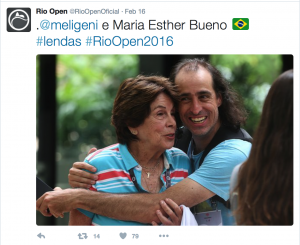
“We are old friends and always have a good time when we get together,” said Maria Esther. “I am very pleased he has received such a fitting tribute in front of the Rio people.”
After the match between David Ferrer and Dominic Thiem, the Rio Open honoured the Brazilian tennis hero, recalling the highlights of Meligeni’s career in a video played in the stadium.
A former world number 25, Meligini is Brazil’s fourth best player in history and he was touched at the memories as he received a plaque from Ricardo Acioly, his coach for seven years.
“People like you made the sport better and your delivery on the court was sensational, captivating people wherever you played,” he said. 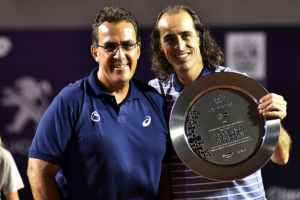 “It’s amazing to be honoured at this great tournament for something I did with much love and dedication.
“It’s amazing to be honoured at this great tournament for something I did with much love and dedication.
“I stopped playing there about 12 years ago and people treat me with great affection.
“Receiving this from someone who helped me so much, that transformed my tennis it is even more special,” added Meligni.
A lefthander, Meligeni won the gold medal at the Pan American Games in Santo Domingo in 2003, his last competition before retiring.
He was respected by Brazilians for his warrior qualities on the court, fighting for every the ball, and for being a playful showman.
Affectionately nicknamed ‘Fininho’, he won three titles of ATP (Prague, Pinehurst and Bastad) and finished fourth in the Atlanta Olympics in 1996, the best result of a Brazilian in the competition.
He was also a semi-finalist at Roland Garros in 1999 and had outstanding victories over American Pete Sampras and Spaniard Carlos Moya, both former number 1s.
Originally from Argentina, Meligeni became a naturalised Brazilian as a child.
He excelled in the Davis Cup, helping the country to achieve important victories, particularly in the campaign in which Brazil reached the semi-final in 2000.
At 44 years of age, ‘Fininho’ now works as a commentator on a television channel.

